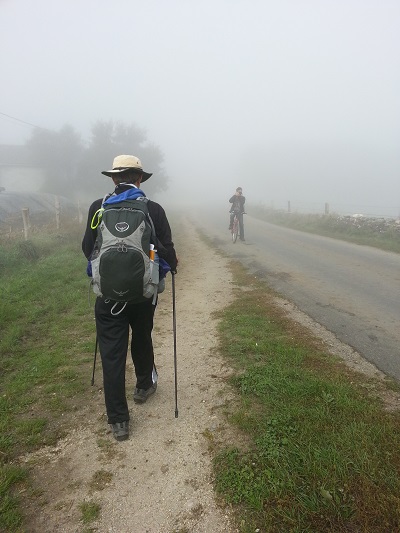On 28th October 2014, we arrived in Athens (the port of Piraeus) by ship from the Holy Land on our way back to Fort Lauderdale. Because our ship was to be docked for only 12 hours (time constraints), we decided on joining a day tour into the ancient city of Corinth. Corinth is about 78 km (48 miles) west of Athens. It is situated on a peninsula (a stretch of land) that joins the Peloponnese to the Southernmost part of mainland Greece. Our tour to the ancient city included a side trip to visit the Corinth Canal.


The Corinth Canal (a dream envisioned a couple of thousands of years ago) was finally built and completed in 1893. It spans a distance of 6.3 kilometres. The depth of the canal is 8 metres. The canal width alters between a minimum of 21 metres and a maximum of 25 metres at the bottom and at the surface, respectively. Traversing through the canal saves a ship a journey of 185 nautical miles. It is surrounded by walls standing at a height of 52 metres.
Ancient Corinth
Ever since my journey to Turkey in 2009 ( “Steps of Paul” ), I have always wanted to visit Corinth’s ancient city. From the New Testament perspective on human conflicts and divisions (even among Christians), Corinth is a focal point and always comes to mind. St. Paul visited Corinth in the 50s AD and wrote two letters to the Corinthians (Corinthians 1 & 2 in The New Testament). According to Acts of The Apostles, St. Paul lived in Corinth for 18 months, and it was here that he became acquainted with Aquila and Priscilla, who became his fellow workers.

The acropolis of Corinth is known as Acrocorinth. It rises about 1800 feet above the surrounding plain. At the highest summit was the Temple of Aphrodite.
Ancient Corinth flourished as a major Greek city after first being inhabited in the Neolithic period (5000-3000 BC). In 146 BC, the Romans destroyed this prosperous Greek city in the Battle of Corinth (a battle fought between the Republic of Rome and Corinth (with its allies in the Achaean League). In 44 BC (under Julius Ceasar), the city was rebuilt as a Roman city. Today the ruins of Ancient Corinth can be seen spread around the base of Acrocorinth (where lay the Temple of the Greek Goddess Aphrodite of which little remains). Most of the surviving construction we see (rather than Greek) are actually Roman (rebuilt by Caesar). Over the centuries, earthquakes have also destroyed much of the city.

Temple of Apollo (Greek) overlooking the Roman agora. The most noticeable remaining ruin (of Greek buildings) that we saw is the stone Temple of Apollo constructed on a hill that overlooks the Roman agora’s remains (marketplace). The Temple was still functioning at the time of St. Paul (in the 50s AD) until earthquakes destroyed it. Seven of the original Doric columns still stand and can be seen today.

Somewhere it is mentioned that archaeology is about excitement and “intellectual curiosity and finding ways to turn that curiosity into knowledge about people in the past.” I tried to imagine and visualize the hedonistic lifestyle in this prosperous city of Corinth in Paul’s time. I saw and walked upon the paved Lechaion road a few metres from the gateway to the Roman agora’s south. On both sides were small pavements fitted with gutters (which apparently were) the artificial rainwater recipients. The road, including the sidewalks and drainage channels, was actually quite wide (about 12 metres). The steps along the road indicated to me that this passage was probably not intended for vehicles with wheels even though chariots were in use at that time … Walking up and down this broad marble avenue, I could view the Acrocorinth (and conjured up a picture of the Greek Temple of Aphrodite and heard the noise in the Roman agora) and even smell the ocean breeze from the Gulf of Corinth.
In the conclusion of my blog “Cultural Pilgrimage,” I struggled with the following question: Is human conflict the “fruit” of the original sin of man: “pride”? On my way home on this voyage, I had the opportunity to listen to James W. Kennedy, the JFK Space Centre’s former Director, talked about the “good ego” (inspired by space exploration stories). Many years ago (as a young man), I read William Shakespeare’s “Henry V” in which he penned this famous line: ” Self-love, my liege, is not so vile a sin, as self-neglecting.” I have been trying ever since to understand what Shakespeare really meant. It is said that “pride is a conundrum”: simultaneously evil and a blessing. We take pride and encourage our children to take pleasure in their hard-won successes; we consider pride the worst of the seven deadly sins. We need the Spiritual Gift of Discernment to understand the difference between “false pride” and the “good ego.” Human conflicts (without transformation of the beings) will continue to exist everywhere in the world.
I was blessed with the opportunity to walk with humility on the Lechaion Road in Ancient Corinth. I fulfilled the wish that I had when I was in Tarsus. I did it! Someone once said: I hear I forget I see I remember I do, I understand. Do I really understand? Did I take anything away from this journey of mine into the ancient city of Corinth?












You must be logged in to post a comment.